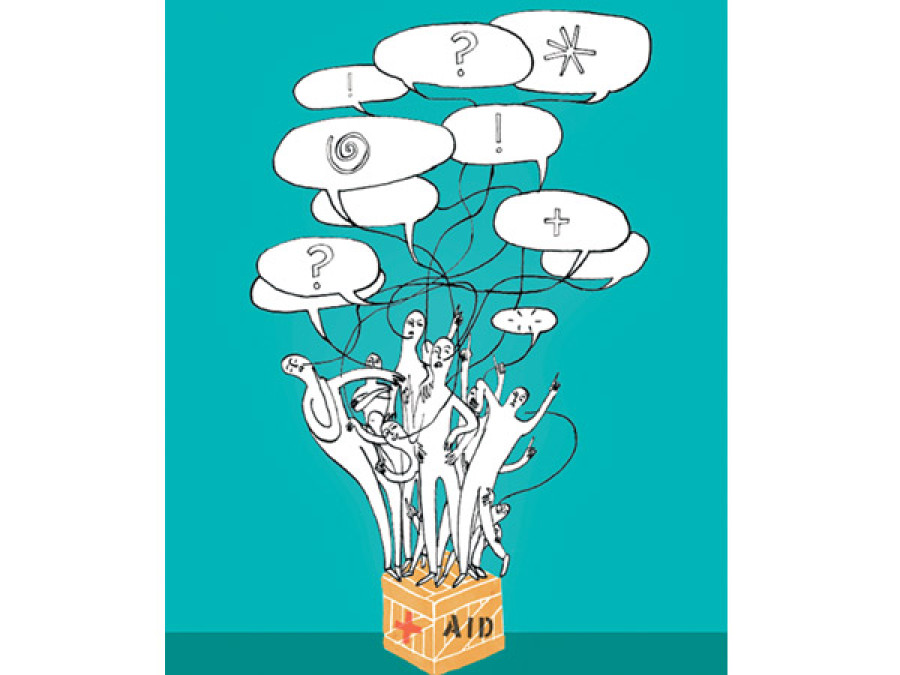Opinion
Nepal and the Nordics
Those who would assist Nepal must consider weaknesses in both donor mindset and superstructure
Kanak Mani Dixit
However, the ambassadors’ presentation seemed somewhat a-historical, apples and mangoes vis-à-vis Scandinavia and Nepal. We know why we are where we are and unless the historicity is considered, you are liable to make soft and friendly noises without making a dent.
The three Nordics are relatively new arrivals (less than two decades) in the Nepal aid scenario and hence, have less baggage. At the same time, they need to understand the development discourse as it played out in these hills and plains.
Credit where due
Let us be clear at the outset that the fault for continuing under-development has to be borne principally by Kathmandu’s politico-economic elites, for commission and omission since the start of the modern era in 1950. But what of the development partners?
Nepal’s six decades of ‘development journey’ has been in the company of the international aid community and so, the latter must share in the applause as well as the blame. It is not fair to ask Nepali actors to bear the entire burden of guilt.
The three ambassadors would have carried more weight had they studied the strengths and weaknesses of international assistance to Nepal, since before the Nordic arrival. Had they done so, they would probably give more credit to the Nepali state and society for their resilience, openness to ideas, and never-say-die spirit.
To give credit where it is squarely due, development assistance was the single-most important factor that helped the closed-off country open its eyes to the world, and to build modern-day aspirations. There are many areas where donor assistance was of obvious benefit over the decades, from highway building (many countries) to community forestry (Australia) to the upgrading of trail suspension bridges all over (Swiss). Other critical areas of advance, however, have been home-grown, including the FM radio movement and the successful but short-lived experiment in local government.
The government, once upon a time, used to prioritise donor intake, but by the Panchayat’s end-run in the late 1980s, it had been reduced to taking anything and everything given as foreign aid. Donor dependency accelerated after 1990, debilitating the self-help communitarian spirit of the average Nepali citizen (the study of which got Elinor Ostrom her Nobel Prize in economics).
Donor & denizen
The problems multiplied. The salaries provided by multilateral, bilateral and INGO agencies skewed the job market and emptied all sectors of much-needed professionals. Tied aid took much money back to where it came from. Donors pushed pet programmes, themes, and fads unto Nepal with little to show for much expenditure, as evident in the field of school education and its ‘basket fund’ that is heavily supported by the agencies.
The distance between donor and denizen is exposed in the use of outsized SUVs on Kathmandu’s narrow streets. From an activist vocation, within a couple of decades, ‘development’ had transmogrified into a career option. The average three-year term-of-duty of the donor representative tended to undermine long-term requirements—one reason why the agencies are loathe to support areas vital to national growth, from archiving to public transport to college education in the humanities.
The diplo-donor community came to garner inordinate clout because it holds much cash in a country where there is no other source for substantial grant support. Unfortunately, for all the power to bring change and determine discourse, the knowledge base regarding the host society tends to be weak, because of the dearth of readings on political science, history, and economics. The resulting uni-dimensional understanding of Nepali society is fortified by donor-funded research in a country where scholars have mostly turned into consultants on the dole. The money-infused clout also mutes criticism of the embassies
and donor entities by the media and intelligentsia.
A major problem has been seen in the derailment of successful local initiatives, because they attract aid agencies like bees to a honey-pot, to weaken the original activity through the funding flood. There is an added problem when the aid-wallahs support what should be social movements—funded activism tends to be brittle and uncompromising and, further, saps the spirit of genuine activists.
To provide diagnosis and prognosis of Nepal’s socio-economic advancement, you first need, with all humility, to understand the causes of under-development. Among them are geopolitical roadblocks, social exclusion, absence of democracy, absence of local government, and elite-capture.
You cannot understand today’s development indicators without referring back to 30 years of the stultifying Panchayat regime, put in place by king Mahendra, which successfully separated ‘participatory’ from ‘development’. Similarly, today’s under-development cannot be de-linked from the two decades (1996 to date) of thwarted development efforts, economic derailment, lost employment generation, capital flight, investment drought, and so on. There was, if you remember, something called the ‘people’s war’. My own claim is that Nepal would already be a ‘developing country’—all by ourselves, if it were not for armed conflict.
Human rights & democracy
There is enough blame to go around for the corruption, misjudgement, and malfeasance in Nepal’s development effort. It requires introspection by all actors, starting with the economic/political elites of Kathmandu but not excluding the donor community. Present-day embassies and agencies must also be answerable for the actions of past administrators, for there cannot be
(funding) power without responsibility.
To pick just one example, why was the Tarai-Madhes, with its high density of population and poverty, neglected for so long by the ‘development set’. The sudden focus on the plains was a result of the transformed discourse following the Madhes Movement of 2007, which is a welcome corrective as long as the history of neglect is not forgotten.
In the present-day evolution of inter-state relations, governments are not only allowed, but are required, to be concerned with democratic values and human rights in other countries. There is no interventionism when it comes to human rights and democracy. On the other hand, identity politics is fraught with challenges, because of the extreme polarisation and populism which tends to leave so much left unsaid and unclear. And yet, some donor organisations have felt perfectly comfortable wading in.
The inter-community discourse in Nepal should be left to itself, with the discussion best left to Nepali citizens of mountain, hill, and plain, their political representatives, and the sovereign, elected Constituent Assembly. On human rights, the Nordic ambassadors as well as others, including the United Nations system and the European Union, must ensure that their watch-dogging does not get entangled in the web of politics and constitution-writing. What can explain the unconscionable selectivity in human rights matters that we are seeing—consider the deafening silence of the plenipotentiaries and agency heads in the year-long hunger strike and ultimate death of Nanda Prasad Adhikari.
To achieve the goals of development as set out in the ambassadors’ article, the priorities would be to achieve political stability through the following pathway—separation of powers, elections of local government, accountability for grave human rights abuse, and constitution-writing through ‘process’ rather than anti-democratic procedures being recommended by friends from near and afar.
As a relatively neutral source of support for Nepal’s development drive, the Nordics should be wary of being pulled by the geopolitical rivalries that revolve around the Chinese and Indian spheres of influence. They should be there for Nepal and Nepal alone.
Meanwhile, it may not be a bad idea for the three Nordic foreign ministries to collaborate on a review, conducted by an ombudsman, on the involvement of their embassies in the peace/development/democratic process of Nepal, to point out good initiatives, mistaken ones, and ones where there was over-reach.




 19.12°C Kathmandu
19.12°C Kathmandu










